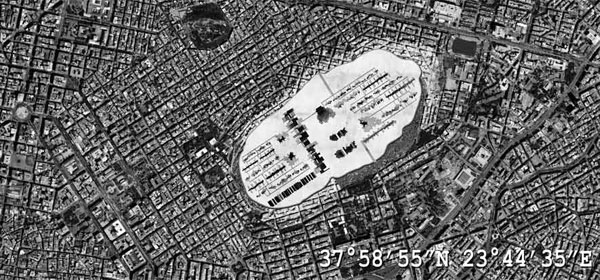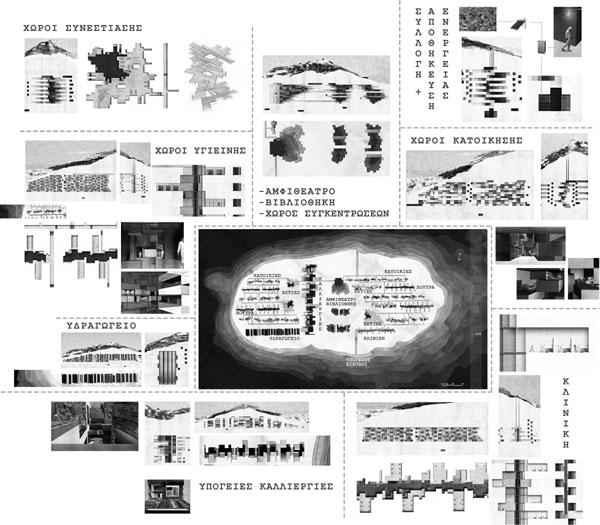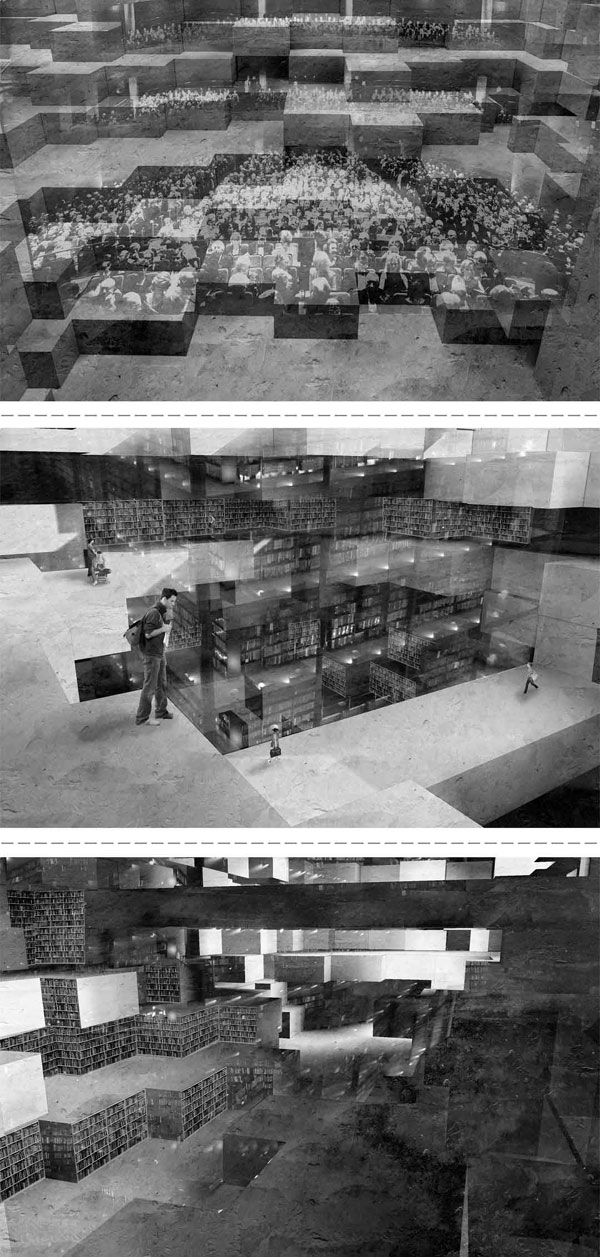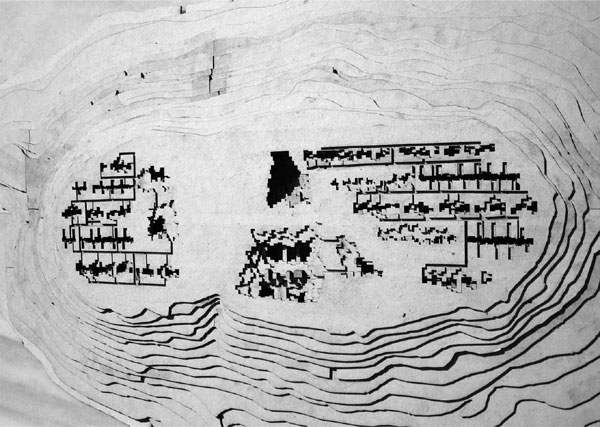STUDENTS PROJECTS
PROJECTS2012
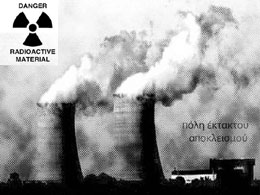
19 December, 2012
RADioactive ATHens City of emergency reclusion
A nuclear shelter which replies to current events of radiation threats, but finds application in a post-apocalyptic future of destruction and efforts to save the human race.
Student : Eleni Xan
Supervisors: Kostis Panigiris
University of Thessaly, Department of Architecture
Date : 29/02/2012
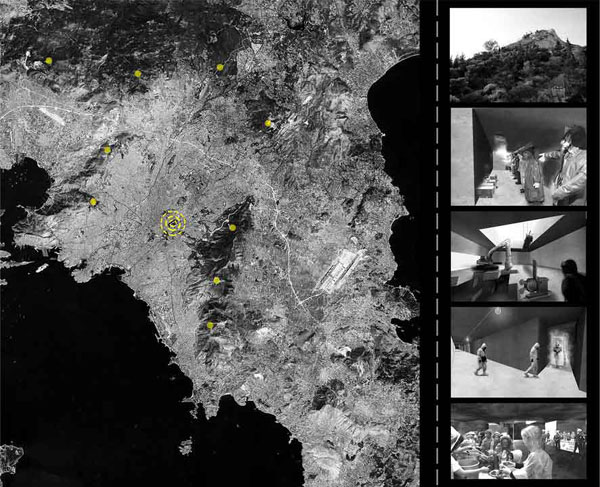
In this new reality of pollution, the earth's surface is transformed into a hostile environment. Here, man has to hide deep into the earth to protect himself. In a closed and regulated environment, society evolves in order to suit to the new survival situations.
The location of the shelter allows access from all of Lykavittos' surrounding areas through entrances that lie on the slopes of the mountain, as well as from more removed areas that connect through the underground metro to the Evangelismos station. Inside Lykavittos, many meters of rock separate people from the outside atmosphere. Initially the shelter has been designed taking into consideration seclusion and self-sufficiency. The nuclear meltdown of the reactor at the Fukushima power station, during the tidal wave created by the earthquake of 11th of March 2011, constituted the vital motive for the creation of this shelter. The danger of the radioactivity that was released had as a result the immediate evacuation of the surrounding population in a radius of 20 km from the factory Daiichi. Despite the efforts of containing the radiation, radiation leaks were witnessed in various regions of Japan, as well as the west seashores of North America. It is evident from the Chernobyl event of 1986 that radiation cannot be contained with total success and that even in countries that lack nuclear reactors, measures towards protecting the civilians against a nuclear event must be taken nonetheless.
With this pretext the shelter of Lykavittos began as a nuclear shelter with the attributes of water and air filtration, solar power generators from the now-vacant city of Athens and its own underground farming. However, the shelter with the present attributes can also correspond to other destructive events, such as those of a biological or chemical threat, earthquake or even to the event of a war.
The Lykavittos shelter program is but only a prototype of a new series of shelters that can be constructed in the surrounding mountainous areas of the Attiki region to shelter the growing population. Their number and their location must be so that each civilian will correspond to a vacant spot in the shelter and will have immediate access to it. With the sounding of the alarm a regulatory authority will be responsible for the safe and organized transport of the civilians to the underground shelter and its sealing. This authority will have been selected prior to the shelter program and will be responsible for keeping order and safety and the survival of the shelter as a whole. Everyone in the shelter will have to follow a strict line of rules that will allow the fair distribution of limited space and supplies.
